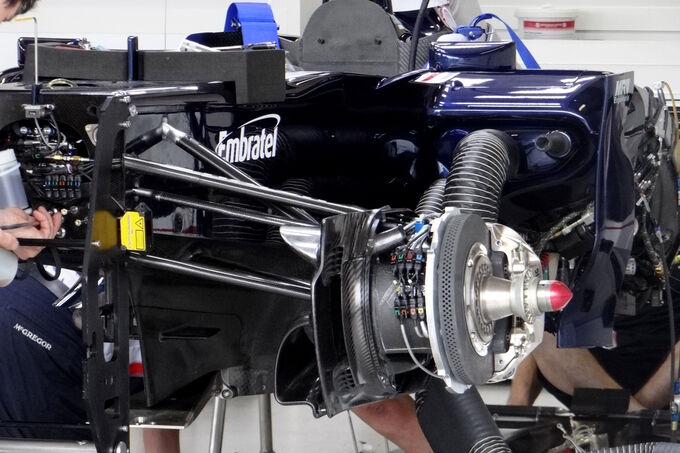One factor that is relevant is the clutch. A Formula One clutch is minimal in every aspect, fragile, and I seriously doubt it could be effectively used in partnership with the engine in braking.
Sure, you could enlarge and beefup the chutch so that it could withstand being used in engine braking, but right now, it's not up to the task. Of course, if you did beef it up, it would wreak havoc with everything in the drive train, from increased mass and inertia to having to relocate the centerline of the crankshaft to accomodate the larger clutch.
So if the clutch isn't used, then the transmission has to match the engine revs to the speed in order to avoid turing the entire transmission into an exposion of metal fragments. It does that right now, but is doesn't engage any engine braking.
It's amazing how much energy and heat the brakes have to deal with, and this year it will be interesting. Due to changes in regulations, the "frisbees" are now illegal, and thus airlow within the wheel won't be as effective, and due to the need to carry a lot more fuel, the brakes will be severly taxed, especially in tracks such as Circuit Gilles Villeneuve.
Please remember that not only are brakes used for performance, they are a vital and critical part of safety. There's no better way to render a dangerous situation into one of safety than stopping the car. Right now, the simple system in place is just that, simple and reliable. The only thing I can think of that is safer and more reliable is an anchor and chain. If brake-by-wire is intended to be used, I will accept it only it it can demonstrate the same level of reliability as what we now have.
- Login or Register
No account yet? Sign up





